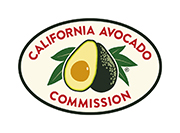Avocado Grove Soil Salinity 101
Understanding soil salinity and irrigation are key concepts to successful avocado grove management because poor avocado yields are often caused by under-irrigation and/or high soil salinity.
Irrigation and Salinity Glossary of Terms
ECe. Soil salinity is measured as the salt concentration of a soil solution in terms of electrical conductivity (EC). For soil salinity, the EC is written as ECe.
Irrigation. Providing water to soil in order to create a favorable environment for plants.
Leaching. Dissolving and transporting excess soluble salts from the root zone of the soil by applying and then draining excess water in the grove.
Avocado Grove Salinity Management Best Practices
The salinity of avocado grove soil is influenced by several factors. Frequent use of irrigation water (which has salt in it) will influence the salinity of the soil. Avocado grove salinity is also influenced by rainfall content and timing, soil drainage, and irrigation practices.
Measuring Avocado Grove Salinity
Salinity of water used to irrigate California avocado groves is measured by the electrical conductivity (EC) of the water. When ions (salts) are present in the water, the EC of the solution increases. If no salts are present, the EC is low. One EC (dS/m) is equal to about 640ppm salt.
Identifying Salinity Problems in California Avocado Groves
California avocado trees are highly sensitive to the salts found in soil or irrigation water, known as salinity. Salinity can reduce avocado yields, tree size, photosynthesis, root growth and can scorch and yellow avocado leaves, therefore it is important that California avocado growers constantly manage the salinity in their groves.


